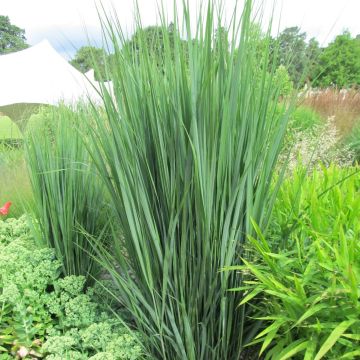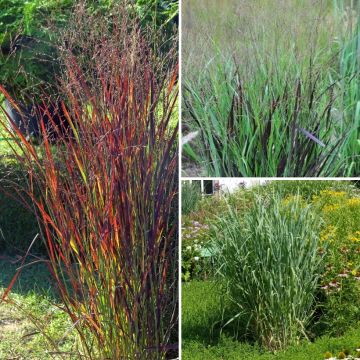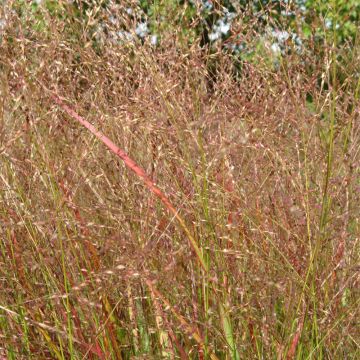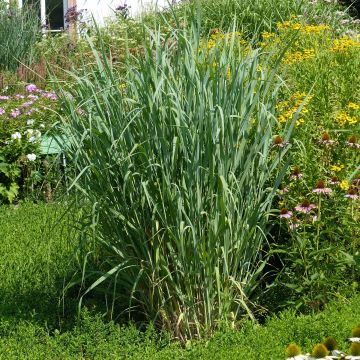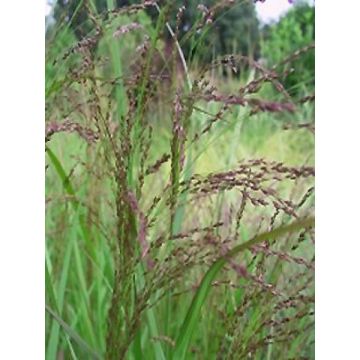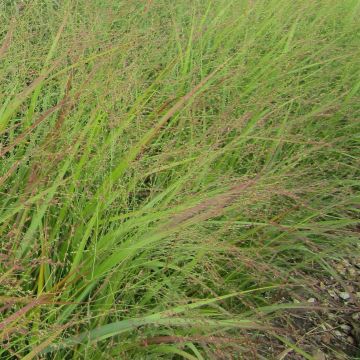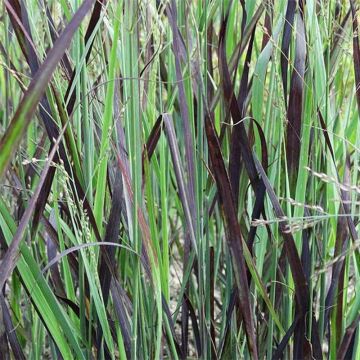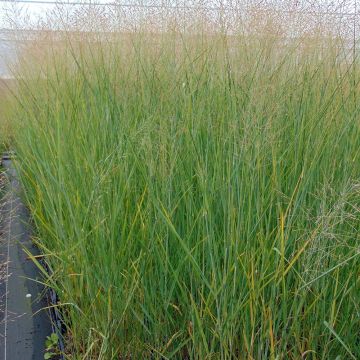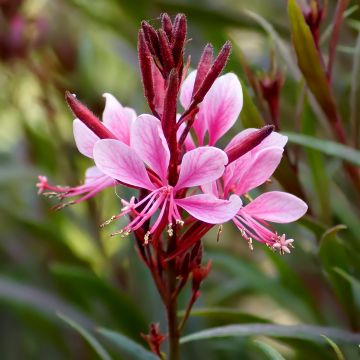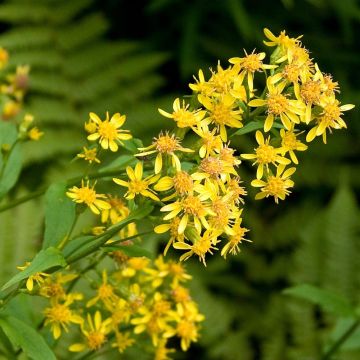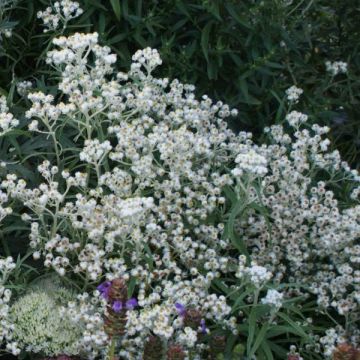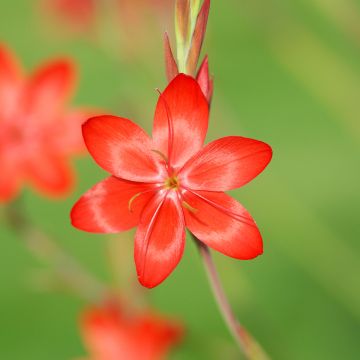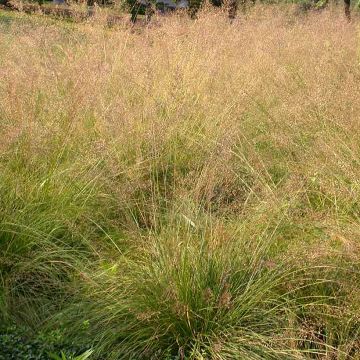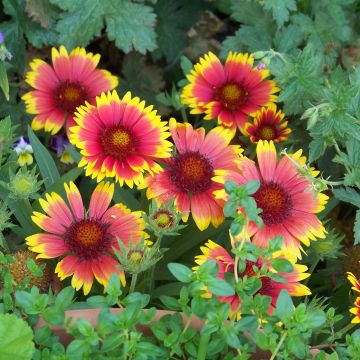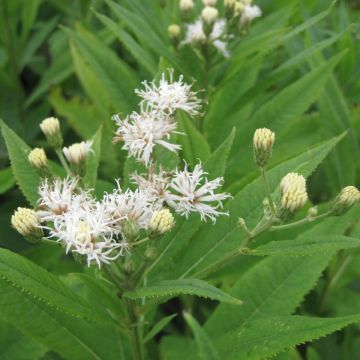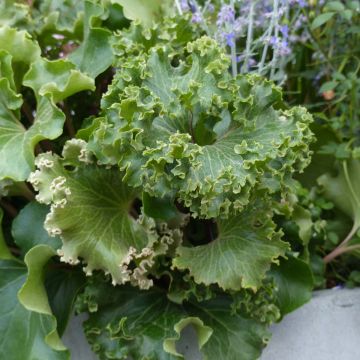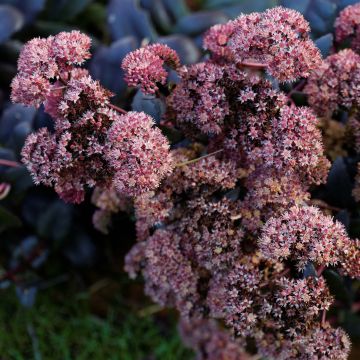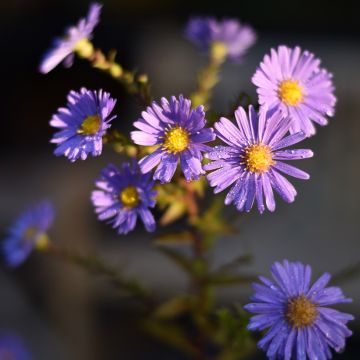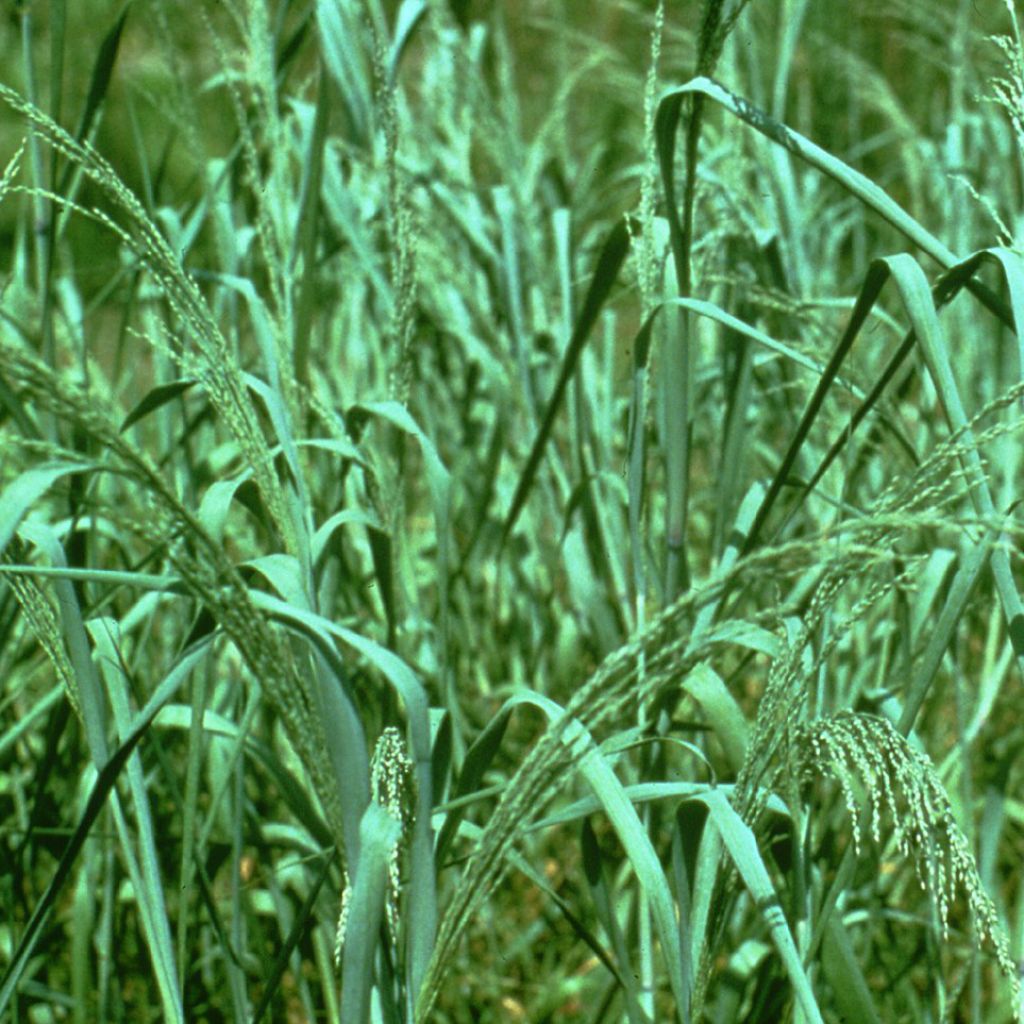

Panicum amarum
Panicum amarum
Panicum amarum
Bitter Switchgrass
Why not try an alternative variety in stock?
View all →This plant carries a 12 months recovery warranty
More information
We guarantee the quality of our plants for a full growing cycle, and will replace at our expense any plant that fails to recover under normal climatic and planting conditions.
From €5.90 for pickup delivery and €6.90 for home delivery
Express home delivery from €8.90.
Does this plant fit my garden?
Set up your Plantfit profile →
Description
Panicum amarum is a botanical grass originating from coastal and sandy areas of North America. It stands out from other species with its firmer and thicker leaves of a beautiful blue-green colour. This large deciduous and perennial grass blooms at the beginning of summer, with large airy spikes. The spikes are initially pink, before turning purple in autumn. It is adaptable to dry, poor, and sandy soils. Very hardy, it requires full sun to give its best. This non-invasive plant is a boon for coastal gardens, and dry or wild gardens. It is both powerful and light as a breeze.
Panicum amarum belongs to the Poaceae family, naturally occurring in an area ranging from the East Coast to the Gulf of the United States, to northern Mexico, the Bahamas, and Cuba. This perennial grass grows from a thick rhizome, forming clumps at least 1.5m (5ft) high (over 2m (7ft) in its natural habitat) and 60cm (24in) wide. It has a rather upright habit, but the leaves located at the base and at the periphery of the clump are gracefully arched towards the ground. The plant has thick and firm leaves, 50cm (20in) long, with a pleasant glaucous to bluish colour. The inflorescence is a narrow panicle that can reach 60cm (24in) long and 14cm (6in) wide. Flowering takes place from June to September, initially taking a medium pink shade before turning purple in autumn. It is followed by the formation of a few low-viability seeds. Indeed, this grass mainly reproduces vegetatively.
European millet is mainly composed of annual species. Perennial species like Panicum amarum come from America. Adapted to extreme conditions, panicum can withstand anything: drought, cold, and waterlogged soils. It is versatile and adapts to many situations in the garden. Non-suckering, this tall grass is highly appreciated at the back of slightly wild flower beds, with pink or white flowers, or planted as a screen. It can form large groups near bodies of water. This plant is particularly well suited to coastal areas as it tolerates salt spray, and can be used to stabilise the soil of an embankment or stabilise a dune, alongside Ammophila arenaria or Leymus arenarius. It is a wonderful structural plant, perfect in a large container on a patio to create a minimalist scene in a contemporary style.
Report an error about the product description
Panicum amarum in pictures
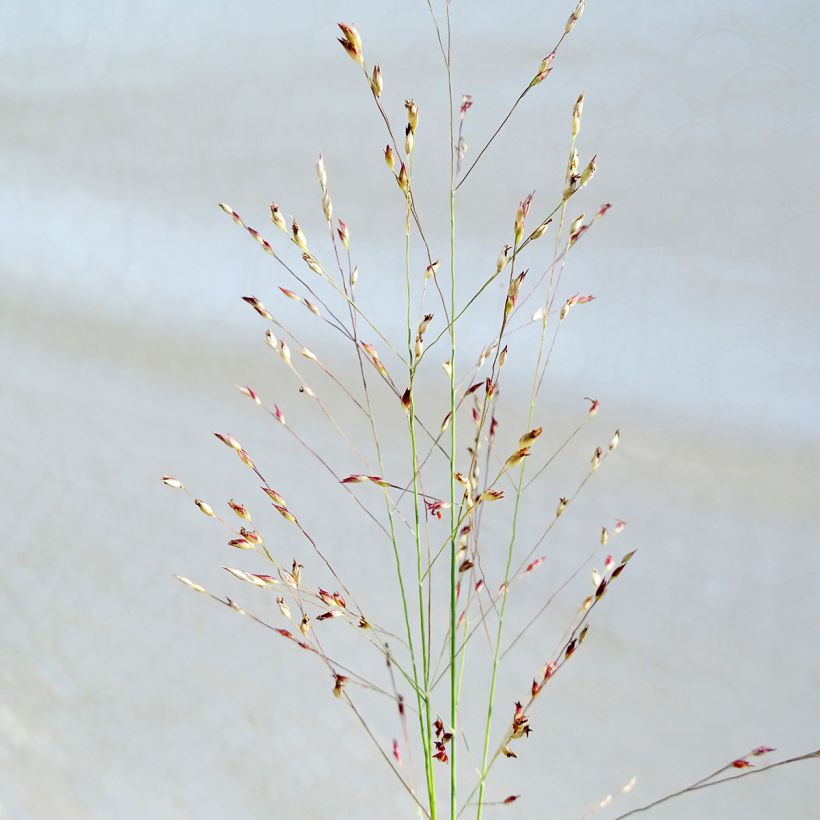

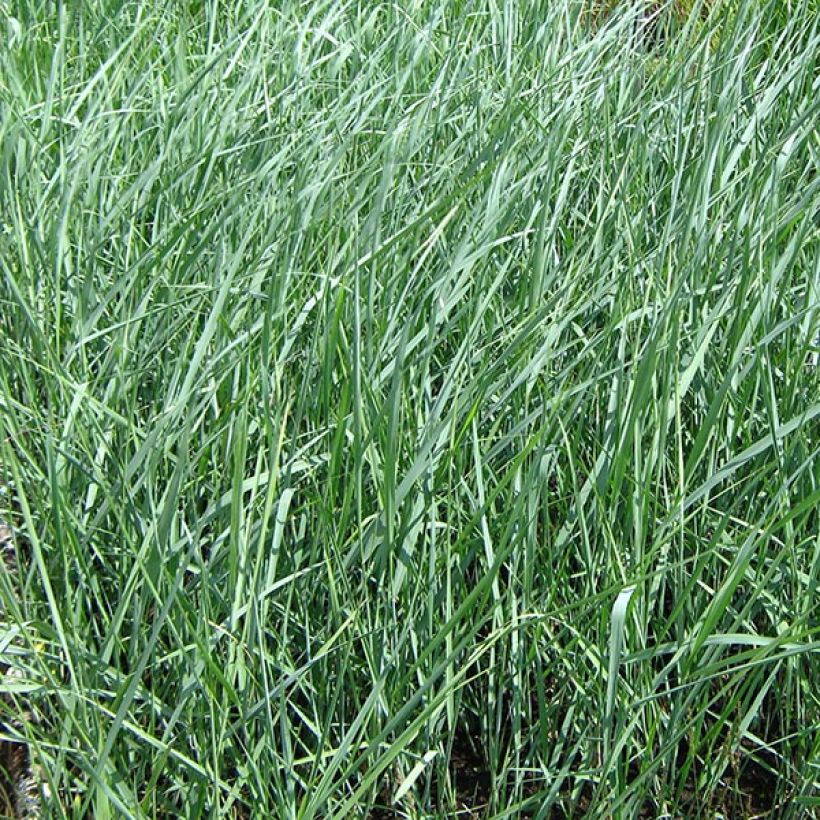

Flowering
Foliage
Plant habit
Botanical data
Panicum
amarum
Poaceae
Bitter Switchgrass
North America
Other Panicum
Planting and care
This drought-tolerant grass can grow in various conditions, although it prefers well-draining and poor soils, even sandy, acidic, or chalky ones. However, it requires a sunny exposure.
Plant Panicum amarum in rather light, moist to dry soil, and in full sun. In poor soil, the plant appreciates a good fertiliser 2 to 3 times a year, before the start of new vegetation and during the summer. Cut back the clumps in April, at the start of new growth.
In dry and infertile soil, Panicum amarum will have slower growth, especially in the first few years, and slightly less spectacular development. The drought resistance is proven once the plant has been able to deeply root itself in the soil. Therefore, it is important to water it regularly during dry periods for 2 or 3 years.
Planting period
Intended location
Care
This item has not been reviewed yet - be the first to leave a review about it.
Late flowering perennials
Haven't found what you were looking for?
Hardiness is the lowest winter temperature a plant can endure without suffering serious damage or even dying. However, hardiness is affected by location (a sheltered area, such as a patio), protection (winter cover) and soil type (hardiness is improved by well-drained soil).

Photo Sharing Terms & Conditions
In order to encourage gardeners to interact and share their experiences, Promesse de fleurs offers various media enabling content to be uploaded onto its Site - in particular via the ‘Photo sharing’ module.
The User agrees to refrain from:
- Posting any content that is illegal, prejudicial, insulting, racist, inciteful to hatred, revisionist, contrary to public decency, that infringes on privacy or on the privacy rights of third parties, in particular the publicity rights of persons and goods, intellectual property rights, or the right to privacy.
- Submitting content on behalf of a third party;
- Impersonate the identity of a third party and/or publish any personal information about a third party;
In general, the User undertakes to refrain from any unethical behaviour.
All Content (in particular text, comments, files, images, photos, videos, creative works, etc.), which may be subject to property or intellectual property rights, image or other private rights, shall remain the property of the User, subject to the limited rights granted by the terms of the licence granted by Promesse de fleurs as stated below. Users are at liberty to publish or not to publish such Content on the Site, notably via the ‘Photo Sharing’ facility, and accept that this Content shall be made public and freely accessible, notably on the Internet.
Users further acknowledge, undertake to have ,and guarantee that they hold all necessary rights and permissions to publish such material on the Site, in particular with regard to the legislation in force pertaining to any privacy, property, intellectual property, image, or contractual rights, or rights of any other nature. By publishing such Content on the Site, Users acknowledge accepting full liability as publishers of the Content within the meaning of the law, and grant Promesse de fleurs, free of charge, an inclusive, worldwide licence for the said Content for the entire duration of its publication, including all reproduction, representation, up/downloading, displaying, performing, transmission, and storage rights.
Users also grant permission for their name to be linked to the Content and accept that this link may not always be made available.
By engaging in posting material, Users consent to their Content becoming automatically accessible on the Internet, in particular on other sites and/or blogs and/or web pages of the Promesse de fleurs site, including in particular social pages and the Promesse de fleurs catalogue.
Users may secure the removal of entrusted content free of charge by issuing a simple request via our contact form.
The flowering period indicated on our website applies to countries and regions located in USDA zone 8 (France, the United Kingdom, Ireland, the Netherlands, etc.)
It will vary according to where you live:
- In zones 9 to 10 (Italy, Spain, Greece, etc.), flowering will occur about 2 to 4 weeks earlier.
- In zones 6 to 7 (Germany, Poland, Slovenia, and lower mountainous regions), flowering will be delayed by 2 to 3 weeks.
- In zone 5 (Central Europe, Scandinavia), blooming will be delayed by 3 to 5 weeks.
In temperate climates, pruning of spring-flowering shrubs (forsythia, spireas, etc.) should be done just after flowering.
Pruning of summer-flowering shrubs (Indian Lilac, Perovskia, etc.) can be done in winter or spring.
In cold regions as well as with frost-sensitive plants, avoid pruning too early when severe frosts may still occur.
The planting period indicated on our website applies to countries and regions located in USDA zone 8 (France, United Kingdom, Ireland, Netherlands).
It will vary according to where you live:
- In Mediterranean zones (Marseille, Madrid, Milan, etc.), autumn and winter are the best planting periods.
- In continental zones (Strasbourg, Munich, Vienna, etc.), delay planting by 2 to 3 weeks in spring and bring it forward by 2 to 4 weeks in autumn.
- In mountainous regions (the Alps, Pyrenees, Carpathians, etc.), it is best to plant in late spring (May-June) or late summer (August-September).
The harvesting period indicated on our website applies to countries and regions in USDA zone 8 (France, England, Ireland, the Netherlands).
In colder areas (Scandinavia, Poland, Austria...) fruit and vegetable harvests are likely to be delayed by 3-4 weeks.
In warmer areas (Italy, Spain, Greece, etc.), harvesting will probably take place earlier, depending on weather conditions.
The sowing periods indicated on our website apply to countries and regions within USDA Zone 8 (France, UK, Ireland, Netherlands).
In colder areas (Scandinavia, Poland, Austria...), delay any outdoor sowing by 3-4 weeks, or sow under glass.
In warmer climes (Italy, Spain, Greece, etc.), bring outdoor sowing forward by a few weeks.

































